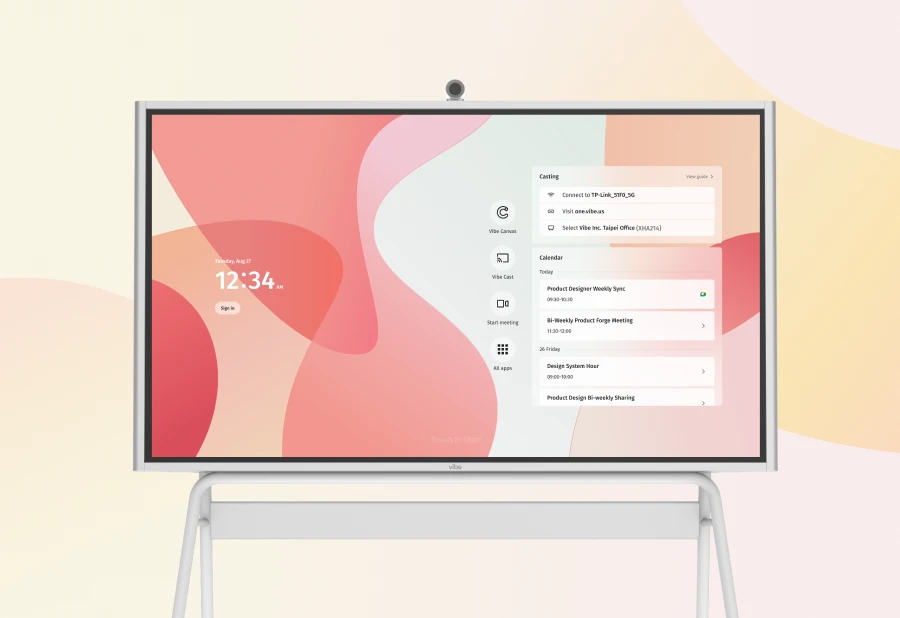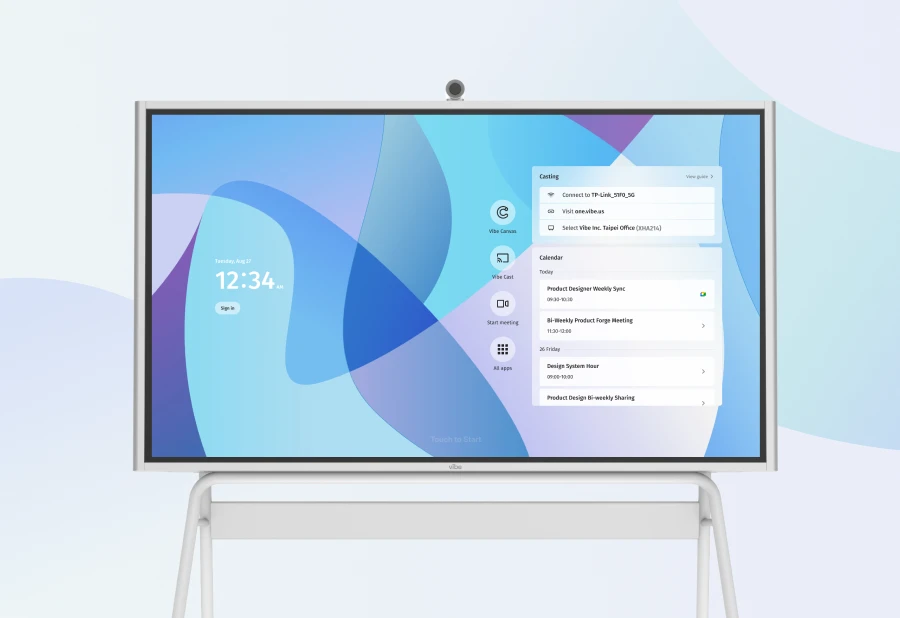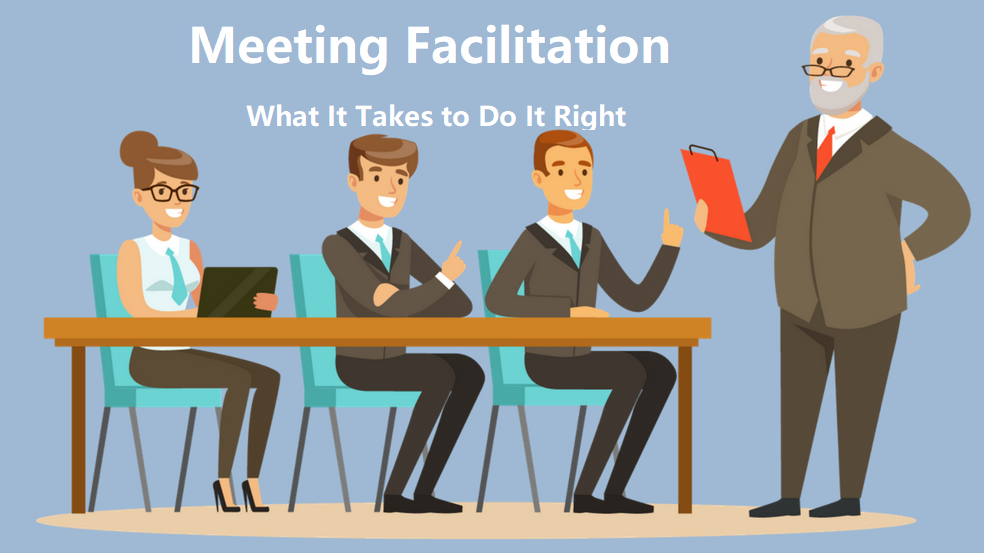When the term Zoom fatigue first entered the vocabulary of employees across the world in 2020, there was hardly any research to support the phenomenon. Is it real? Is it just a natural part of adjusting to remote work?
In December 2020, Zoom reported 350 million daily meeting participants, a nearly 200% increase from a reported 10 million daily meeting participants in 2019. This rapid increase in virtual video conferencing gave Bailenson and many other social scientists more subject matter to work with than ever before.
Yes, Zoom fatigue is real
In February 2021, Bailenson published the first peer-reviewed article on the subject of Zoom fatigue, outlining four consequences of prolonged video chats that contribute to the unwelcome occurrence. At a glance, these four consequences include:
-
Eye gaze at a close distance
-
Cognitive load
-
Mirror anxiety
-
Reduced mobility
Let’s dig into these four findings.
-
Staring at the grid constantly reverses norms
When you attend an in-person meeting, it’s natural for meeting participants to avert their gaze from time to time. When you’re in a virtual meeting, this is the opposite, as it’s considered normal and customary to make eye contact with the speaker at all times.
Additionally, depending on the size of your meeting, you might be locked in on a speaker with your screen expanded so that their face is significantly larger than what it would be in person.
-
The extra emphasis is exhausting
Circling back to the example of an in-person meeting, it is not only natural for participants to look around, it’s also natural for participants to engage in nonverbal communication.
For example, in an in-person meeting, participants might make subtle gestures or rely on eye contact and cues to signal engagement. These gestures and other indicators of body language naturally guide participants to appropriate places where they can chime in verbally or offer feedback. In a virtual meeting, this natural human behavior is incredibly hard to detect unless there’s more emphasis or exaggeration.
According to Bailenson, virtual meeting participants often compensate for the lack of these nonverbal cues by adding extra emphasis to behaviors that might not even happen in an in-person setting. For example, imagine giving a thumbs up to the meeting presenter from across the conference room table once they’ve finished speaking. While this might be considered normal in a virtual meeting, it would make for an awkward interaction in person.
-
Staring at yourself in a meeting is also exhausting
In many video conferencing platforms, meeting participants are generally shown a real-time preview of their face during a meeting, with the exception of a few instances. Whether you tend to look at yourself during a meeting or if you actively try not to, the constant mirroring can still take a toll on you mentally.
As Bailenson notes,, "In the real world, if somebody was following you around with a mirror constantly – so that while you were talking to people, making decisions, giving feedback, getting feedback – you were seeing yourself in a mirror, that would just be crazy. No one would ever consider that."
Bailenson’s study also found that women experienced more mirror anxiety associated with the self-view in video conferencing than men, and that mirror anxiety was a primary mediator for the gender effect on Zoom fatigue.
-
Sitting in the same spot inhibits creativity
Think for a moment about all the phone calls you typically take. For most of these calls, you’re probably not 100% focused on exactly what the other person is saying on the other line – and that’s natural.
In his study, Bailenson points to research that notes people come up with more creative ideas when they are walking, even indoors.
 A woman is answering a call in a conference room
A woman is answering a call in a conference roomNow think back to when you were participating in meetings mostly in person. During the course of a meeting, you might get up to grab a glass of water, stand up to use a smart board, or maybe even start a doodle on a piece of paper.
In both instances, even though you might not actively be looking at the speaker, you’re still dialed into what they are saying. During a virtual meeting, most web cameras have fixed positions that require meeting participants to sit squarely within the range of the camera’s positioning at all times.
This type of reduced mobility becomes especially magnified as a contributor to Zoom fatigue when employees have tightly scheduled meetings that run back-to-back for hours at a time with little to no breaks in between.
While Bailenson’s research demonstrates there is credible scientific evidence to support Zoom fatigue, the fact still remains that virtual meetings aren’t going away anytime soon. Even as businesses transition to hybrid setups, a majority of employees may still be working remotely for significant stretches of their workweek.
These challenges have found leaders across industries seeking ways to keep their remote employees motivated while also increasing virtual meeting engagement.
Five ways to keep employees engaged in virtual meetings
Even if you’re actively taking broad steps to ensure your remote employees are feeling motivated and connected, virtual meetings can still feel like a slog, especially if Zoom fatigue has started to set in.
As there are different strategies for keeping your remote workforce engaged, there are also a few strategies you can utilize to ensure your virtual meetings stay productive.
Make the most of Zoom features
Zoom meetings are here to stay, and while Professor Bailenson articulated four consequences contributing to Zoom fatigue, there are some in-platform solutions that can help decrease these effects.
-
Normalize the camera off setting. While it may not be realistic for you to allow every meeting to be camera-optional for all participants, setting the expectation that it’s appropriate to take a few minutes during a meeting to have some camera-off time is a good compromise. This allows meeting participants to take a moment to look away from their screen, or maybe even finish a meal, while still remaining engaged in the meeting.
-
Break up video meetings with phone calls. Scheduling a few audio-only meetings or phone calls can help break up periods of prolonged gazing. This gives employees the opportunity to get moving and walk around, offering a mental break.
-
Turn off full-screen mode. Remind employees to shrink the size of their video conferencing window to make the faces of meeting participants smaller on their screen.
Make Brainstorms Interactive
Instead of trying to host a brainstorming session where all participants are looking at each other on a grid, motivate your employees to participate with an interactive smartboard.
Smartboards can be effective for brainstorm sessions that take place in person or in a virtual or hybrid setting. For example, smartboards allow all participants to be on the same canvas, so a remote participant can still have access to the presenter’s board to interact with. That means if some employees are at home and some are in the office, everyone can participate in a much more interactive way than simply staring straight at a screen.
In a recent Forbes article, professionals from the Forbes Business Council suggested a series of strategies to help professionals drive engagement and performance in virtual meetings.
Among their top suggestions–start with fun. Smartboards are a great way to kick off brainstorms with a funny joke, a mood-setting Spotify tune, or a viral YouTube video. A little pre-brainstorm lightheartedness can set a more comfortable tone and lead to greater ideation.
Host pre-meeting drop-ins
Leaders across the board have suggested that managers should schedule a time to make themselves available for 5-10 minutes before a meeting officially starts. During this informal free period of time, employees can share feedback or follow up on quick approvals that might otherwise waste time at the start of the originally scheduled meeting.
These informal sessions can more closely mirror in-person meetings where managers might briefly check in with direct reports just outside of a conference room before sitting down to focus on meeting-related business as soon as the meeting starts.
Pay closer attention to meeting length and structure
Most meeting best practices include tips like preparing an agenda or assigning a notetaker. While these things may have fallen by the wayside pre-pandemic, they should now be viewed as critical elements to any meeting you’re hosting.
When meetings are focused with a tight agenda, they are less likely to spiral off-topic, which causes employees to quickly disengage. If you’re having trouble keeping a few employees engaged, consider assigning them note-takers to give them an active way to participate with a clear set of action items to follow up on post-meeting.
Related: How to Take Better Meeting Notes in 2021
Bring back lunch meetings
Employer-catered lunches are certainly not a new strategy to ensure meeting productivity and engagement. However, the return of a lunch meeting can serve as a welcome sign that things are starting to return to normal.
If you’re in a hybrid setup, consider scheduling the lunch meeting on a day where most of your employees are in the office. Get creative with ways to include virtual participants, too. While Zoom etiquette widely suggests that it’s not appropriate to eat during a meeting, consider allowing virtual employees to eat freely during the lunch meeting.
Think outside of reality
Employers who are really forward-thinking in their strategies for amping virtual meetings have turned to virtual reality as a way to host more engaging meetings.
In a piece for MIT Technology Review, writer Tanya Basu recounts her experience testing out Kumospace, an immersive group video chat tool that offers virtual spaces for organizations of all sizes. As she details navigating through a virtual space with couches and a piano she even noted that her tour guide’s voice got softer if she did not keep up. Moments later, she was seemingly transported to a beachfront, all through a virtual experience of course.
While Basu described the experience as "bewildering" it was easy to see why many employers are turning to virtual reality not only for formal meetings but also for informal places to build team culture.
If you don’t have access to virtual reality tools, there’s no need to worry as sometimes relying on simple things like an interactive icebreaker or free meal can go a long way in keeping your remote employees engaged.
Engagement makeovers for zoom fatigues. Vibe offers a collaborative solution combining an interactive whiteboard and innovative smart software. Book a 1:1 live demo today!









-1sbltxxq4FYxHrXrwJVLsCDNsXpqNa.webp)
-5Zp0pmSytvcuYDVs1LvuwplKuRneK0.webp)
